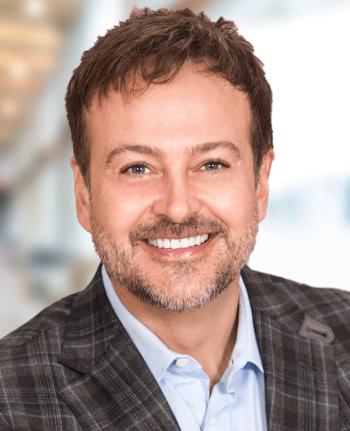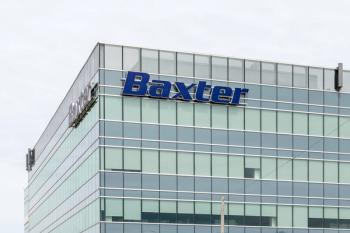
- Medical Economics December 2023
- Volume 100
- Issue 12
The Physician Crisis
Mounting pressures have plunged physicians into a crisis, underscoring the need for comprehensive reform.
Mounting pressures have plunged physicians into a crisis, underscoring the need for comprehensive reform. A confluence of factors, including an acute shortage of medical practitioners, escalating administrative burdens and an epidemic of burnout, has cast a shadow over the profession, and physicians find themselves grappling with compromised job satisfaction and deteriorating mental well-being. The urgency to implement sustainable solutions has become an imperative for safeguarding both the well-being of physicians and the quality of patient care.
Part 1: The physician shortage
The nation’s shortage of physicians is critical — but not hopeless, said the leader of the American Medical Association (AMA).
A five-point plan to bolster the physician workforce will not be easy or fast, but it could be effective for doctors and patients, said AMA President Jesse M. Ehrenfeld, M.D., M.P.H. He outlined key parts of the association’s Recovery Plan for America’s Physicians in an October presentation titled “What America’s looming physician shortage means for patients and health care, and how to fix it — now” at the National Press Club in Washington, D.C.
Physician burnout has grown to become an “insidious” and “urgent” crisis across America. Many doctors already know that, but Ehrenfeld said the situation is not getting the attention it deserves from others, and that things will get worse before they get better as physicians leave in droves.
“Physicians everywhere—across every state and specialty—continue to carry tremendous burdens that have us frustrated, burned out, abandoning hope … and, in increasingly worrying numbers, turning our backs on the profession we’ve dedicated our lives to,” Ehrenfeld said.
The 5-step plan
Ehrenfeld proposed solutions that could be approved in Congress, where many already have bipartisan support.
“There isn’t much that our two major political parties see eye to eye on right now, but on these issues they do,” he said. “We just need the will—and the urgency—to get it done. We need leaders in Congress to step forward and make this happen.”
Step 1: Give doctors financial support.
House Resolution (HR) 2474 is the Strengthening Medicare for Patients and Providers Act. It would provide physicians with
“This would simply put physicians on equal footing as inpatient and outpatient hospitals, skilled nursing facilities and others who receive payment through Medicare,” Ehrenfeld said. Accounting for inflation, Medicare reimbursement to physicians is down 26% from 2001, he said.
Step 2: Reduce administrative burdens, including “the overused, inefficient prior authorization process that insurers use to try to control costs.”
Congress, the administration, and the U.S. Centers for Medicare & Medicaid Services (CMS) all have parts to play in this, Ehrenfeld said. He called for the House and Senate to approve the Improving Seniors’ Timely Access to Care Act, which would expand prior authorization reforms finalized by CMS.
Step 3: Pass three bipartisan bills “to expand residency training options, provide greater student loan support and create smoother pathways for foreign-trained physicians.”
Specifically, the Conrad 30 Waiver Program and the Physician Access Reauthorization Act would improve the J-1 visa waiver programs to address physician shortages in an emergency, especially in rural and underserved areas, while promoting a more diverse workforce. The Conrad 30 bill adds worker protections against physician mistreatment, Ehrenfeld said.
The Healthcare Workforce Resilience Act would recapture 15,000 unused employment-based physician immigrant visas, while the Retirement Parity for Student Loans Act would allow retirement plans to make voluntary matching contributions to physicians during residency, he said.
Step 4: “Stop criminalizing health care that is widely recognized as safe, and that is backed by science and many years of evidence.”
Ehrenfeld called out the 2022 U.S. Supreme Court decision overturning Roe v. Wade for “radically” changing American health care.
Currently 14 states have outright bans on abortion and seven have partial bans. Meanwhile, 22 states have laws restricting or banning gender-affirming care for minors, Ehrenfeld said. These actions force government into personal health care decisions and cause confusion for patients, he said.
Step 5: Make sure physicians are not punished for taking care of their mental health needs.
Feelings of burnout do not necessarily lead to thoughts of suicide, but physicians die by suicide at twice the rate of the general population, Ehrenfeld said.
In either case, physicians hesitate to seek mental health help for fear of jeopardizing their license or employment. Seeking mental health help is a sign of strength, not a weakness, and states and employers should remove outdated and stigmatizing language from their application forms, Ehrenfeld said.
How it stands
Ehrenfeld peppered his speech with personal anecdotes about physicians in despair and patients lacking care.
“It’s estimated that more than 83 million people in the U.S. currently live in areas without sufficient access to a primary care physician,” he said. “In large parts of Idaho and Mississippi, pregnant women can’t find ob-gyns to care for them.” He cited data showing that:
- 90% of U.S. counties don’t have a pediatric ophthalmologist.
- 80% don’t have an infectious disease specialist.
- More than one-third of Black Americans live in cardiology deserts.
Ehrenfeld added that in Florida, his own parents lost their primary care physician because Medicare reimbursement rates are plummeting, pushing independent physicians to financial ruin.
Root causes
Among its many effects, COVID-19 exposed problems in the U.S. health care system, but the situation is not just a pandemic hangover.
Ehrenfeld highlighted a number of reasons why physicians hang up their white coats. Not least are administrative burdens, continuing attacks on science, governmental intrusion in health care, consolidation among health care systems and insurers and epidemic levels of gun violence and drug overdose deaths. Some of the consequences include the following:
- Physician burnout is rampant. About 2 out of 3 doctors admitted to burnout in the COVID-19 pandemic, the highest measure ever, according to a survey by AMA, Mayo Clinic and Stanford Medicine.
- One in 5 physicians surveyed during the pandemic said they planned to leave medicine in the next two years; 1 in 3 said they would cut back their hours.
- International medical graduates face difficulties immigrating to the United States and practicing here.
- New doctors graduate from medical school facing $250,000 in debt, which spurs them to pursue lucrative specialties in cities instead of primary care or practicing in rural areas.
“The physician shortage that we have long feared—and warned was on the horizon—is already here,” Ehrenfeld said in his prepared remarks. “It’s an urgent crisis … hitting every corner of this country—urban and rural—with the most direct impact hitting families with high needs and limited means.
“Imagine walking into an emergency room in your moment of crisis — in desperate need of a physician’s care — and finding no one there to take care of you,” he said. “That’s what we’re up against.”
Part 2: The Crisis of Independent Practice
National reforms are needed to avoid ‘many small, independent practices in a state of financial ruin’
AAFP president outlines solutions to help physicians offer better care for patients, improving the health of the nation.
Primary care is undervalued and overburdened across the United States, but there are measures that could help, said the leader of the American Academy of Family Physicians (AAFP).
Steven Furr, M.D., FAAFP, the academy’s president, offered his solutions in testimony presented to the House Committee on Energy and Commerce.
“Primary care physicians consistently report that they are being asked to do more with less—and it’s having a profound impact on our health care workforce and on patient access,” he said in his written testimony.
While the situation appears bleak for American primary care, Congress could act on legislation that could help, Furr said. He outlined some of
Billing code assistance
AAFP, along with at least 36 other physician, health care and patient-advocacy organizations, endorses the add-on
Family medicine and internal medicine visits are complex, often involving multiple conditions and coordination of care across a large team, but physicians are not reimbursed at scale. The code would “better recognize the inherent resource costs clinicians incur when longitudinally managing a patient’s overall health or treating a patient’s single, serious or complex chronic condition,” Furr said.
Rising prices
Currently, physician reimbursement is the only system in Medicare that does not get a yearly update for inflation.
“There is a significant discrepancy between what it costs to run a physician practice and the actual payment we receive, placing many small, independent practices in a state of financial ruin that leaves them with virtually no options other than to be acquired by a health system or payer, or close their doors entirely,” Furr said. AAFP has endorsed HouseResolution 2474, the Strengthening Medicare for Patients and Providers Act, which would allow an inflationary update to physician payments based on the Medicare Economic Index.
Price vs. place
AAFP supports eliminating geographic adjustments in the Medicare Physician Fee Schedule (PFS), except for incentives for specific policy goals. Those include encouraging physicians to practice in underserved areas instead of penalizing them with lower reimbursement, Furr said.
“If we want to do a better job of recruiting and retaining rural physicians, this is one place to start,” he said. “Patient care provided in a rural area should not be valued less by Medicare than physician work provided elsewhere.”
MIPS
Medicare’s Merit-Based Incentive Payment System aimed to help physicians move to
AAFP also endorses Congress granting a five-year extension to the Quality Payment Program’s Small, Underserved, and Rural practices support program that expired in 2022, Furr added.
Prior authorizations
Physicians know well the administrative complexity—and delays in patient care—created by prior authorization requirements in Medicare Advantage (MA) and other insurers, Furr said. AAFP supports the Improving Seniors’ Timely Access to Care Act, which has long had bipartisan support in Congress.
Congress should mandate greater oversight of prior authorization management by CMS and state Medicaid plans, he said.
Drug coverage
When insurers change coverage of various medications, they don’t explain why to physicians who are helping patients manage medical conditions. They also require step therapy, or “fail first,” forcing patients to try insurer-preferred drugs before those prescribed by physicians, Furr said.
Those practices can be disastrous for patients who have been using medications for years, and a time-consuming headache for doctors. Furr called it “the single greatest administrative burden I’m facing.”
AAFP supports a CMS proposal for MA plans to use electronic systems to query patients’ drug formularies in real time at the point of care, Furr said. The entire process needs streamlining and more transparency, he added.
Get shots in arms
Congress should pass legislation requiring Medicare Part B coverage of all vaccines recommended by the Advisory Committee on Immunization Practices of the U.S. Centers for Disease Control and Prevention. Currently those are split between outpatient care and prescription drug coverage, which prevents primary care physicians from delivering recommended vaccines in their offices, Furr said.
He noted that the nation spends $27 billion a year on four vaccine-preventable illnesses in adults 50 years or older: influenza, pertussis, pneumococcal pneumonia, and shingles.
Performance standards
Tracking various quality and performance standards with data from multiple sources “is a logistical nightmare” focused on finances with little benefit to patient health or cost reduction, Furr said. He added that he nation would benefit from a standardized universal set of quality and performance measures focused on outcomes and cost reduction.
Articles in this issue
almost 2 years ago
My pathway to concierge medicinealmost 2 years ago
Now arriving: The new generation of concierge physiciansalmost 2 years ago
10 tips for responding to patients in an emotional or behavioral crisisalmost 2 years ago
Indirect, angst-free ways to invest in real estatealmost 2 years ago
Closing gaps in care with remote patient monitoringalmost 2 years ago
Creating a Practice Culture of Self-Care, Prevention and Well-beingalmost 2 years ago
Protect Your Assets: Tax and Estate Planning StrategiesNewsletter
Stay informed and empowered with Medical Economics enewsletter, delivering expert insights, financial strategies, practice management tips and technology trends — tailored for today’s physicians.



















